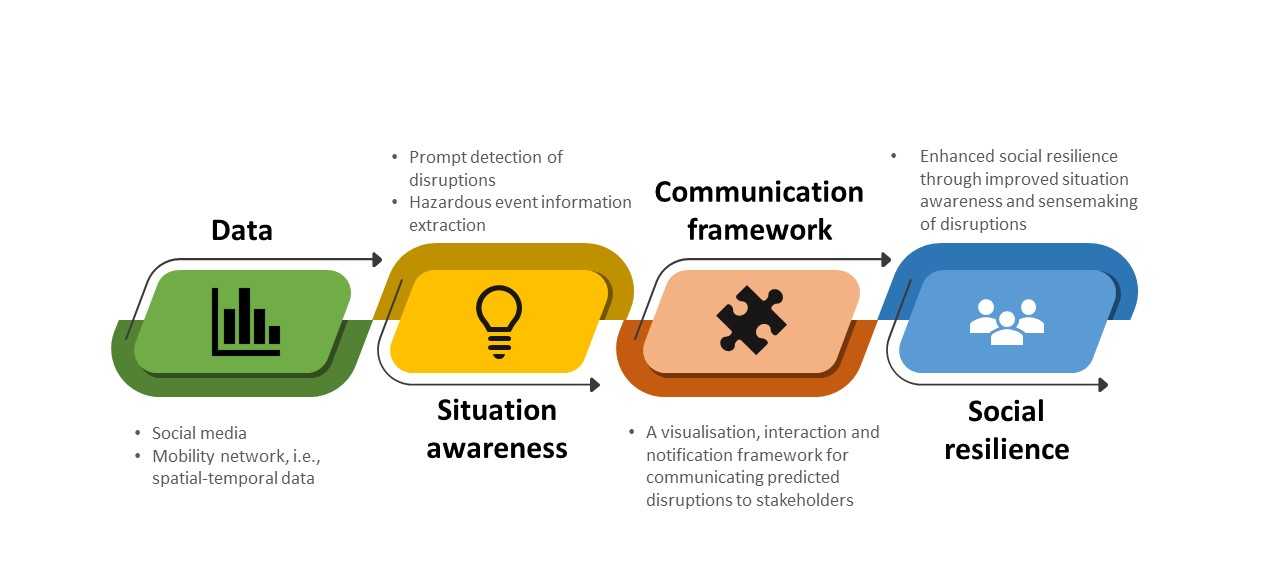Distributed Cognition for Social Resilience
This module focuses on the integration, analysis and usage of data from social media and mobility networks with the ultimate goal of enhancing social resilience in mobility and control room scenarios. An emphasis is put on the cognitive dimension of social resilience, and the application of sensemaking and distributed cognition, i.e., cognition being distributed between people and artifacts within a socio-cultural and technical environment. A methodology and prototype for detecting weak signals in spatio-temporal (and behavioural) data for the identification of potential disruptions will be developed. The methodology allows for context integration and uncertainty handling. A framework for notification and map-based visualisation of predicted disruptions to decision-makers and affected individuals for collaborative control room environments will be designed, including novel multimodal interaction methods.
The research objectives of the module “Distributed Cognition for Social Resilience” are to the following:
- Develop, implement, and test a system that detects weak signals in social media and spatio-temporal data to identify & forecast major disruptions in a mobility system in real time.
- Develop formal context specification for semantically rich context representation and incorporate context into all steps of knowledge discovery from social media and movement data.
- Develop a visualisation, interaction and notification framework for communicating predicted disruptions to stakeholders.
- Develop a framework to detect stress and stressors of individuals (officers) and teams during training and evaluate the effect of stress on behavioural performance in control rooms.

Expected outcomes
The goal of this module is to develop a situation awareness system based on detection of weak signals underlying social media data and mobility data. By the deployment of the system, the expected outcomes are:
- Prompt detection of disruptions and hazardous events (weak signal detection from social media and mobility data).
- Improved situation awareness and sensemaking of disruptions and hazards (context-aware detection of weak signals, event information extraction from social media).
- Improved two-way communication between government and public (social media sentiment analysis and emotion recognition).
- Improved decision-making under stress (stress detection, generating stress training material from social media).